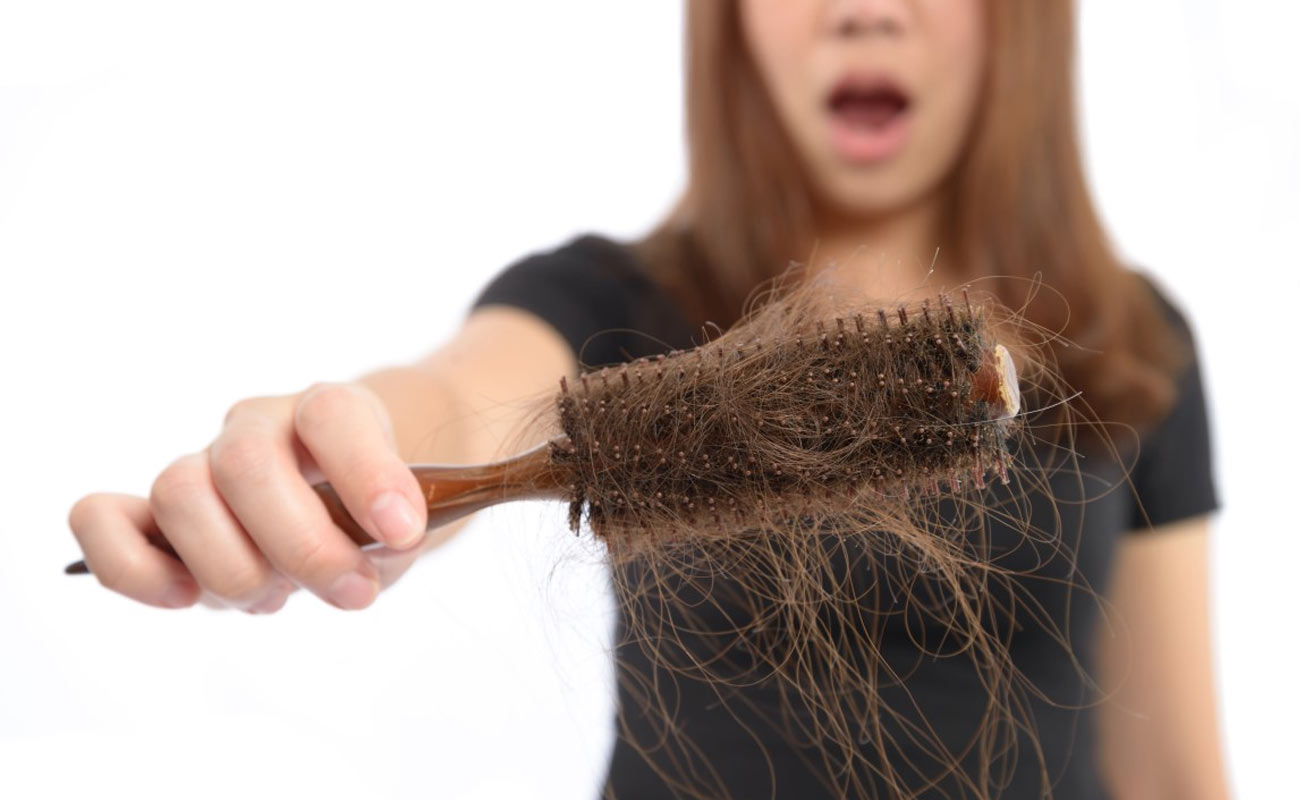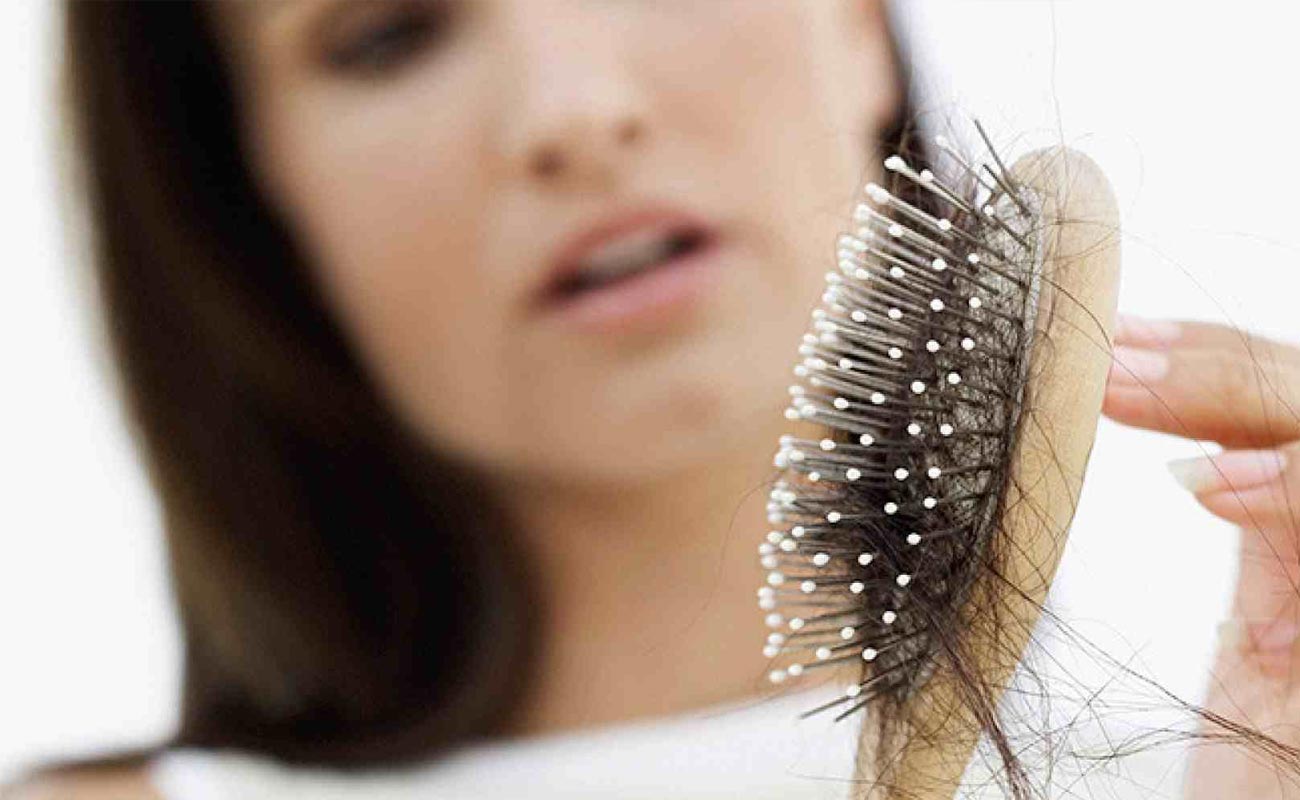Telogen effluvium (hair loss) is a condition where more than normal amounts of hair fall out. There is a general 'thinning' of the hair. Unlike some other hair and scalp conditions, it is temporary and the hair growth usually recovers.

In a person with telogen effluvium, some body change or shock pushes more hairs into the telogen phase. Typically in this condition, about 30% of the hairs stop growing and go into the resting phase before falling out. So if you have telogen effluvium, you may lose an average of 300 hairs a day instead of 100.

When suffering from telogen effluvium, you will notice more hair shedding in the shower, while combing and styling, or on your pillow case and linens. While the appearance of thinning is more pronounced in some people with telogen effluvium, it may be more subtle in others.

Physiologic stress is the cause of telogen effluvium. These inciting factors can be organized into several categories, noted below. Evidence from mouse studies indicates that psychological stress can induce catagen, mainly by effects on neurotransmitters and hormones. In humans, however, the role these effects play in hair loss has not yet been determined. While substance P has been extensively studies in human hair follicles in vitro, in vivo studies have not been performed. In HIV disease, apoptosis may be related to HIV-1 viral protein R. Note the following causes:
A major stressful event such as childbirth or major surgery can interrupt and stop the growth of some hairs. It tends to affect older hairs which are brought to an end of their life cycle earlier than the usual three years or so. Many more hairs than usual are then ready to fall out. It takes 1-3 months for the affected hairs to fall out after their growth has stopped. After a short time, new hairs then grow from the hair follicles as usual. A normal pattern and thickness of hair returns within a few months once these new hairs are established.
However, persistent excess hair shedding may be caused by iron deficiency or an underactive thyroid gland. Your doctor may do a blood test to check for these if you have any other symptoms of these conditions.
Most cases of telogen effluvium can be diagnosed based on medical history and an examination of the scalp and hair. If the hair loss has been occurring for several months, there may be visible thinning patches, but often the hair loss is not dramatic enough for a doctor to notice. If you have large bald patches, you probably don't have telogen effluvium. If the doctor gently tugs on some hairs on your scalp and four or more hairs come out, you probably have telogen effluvium. Also, the hairs will look like hairs in the telogen phase — they will have a white bulb at the end that was in the scalp, and will not have a gel-like covering around that end of the hair.
You may be asked to gather all hairs that fall out of your head over a 24-hour period, and count them to see if the hair loss is truly excessive. Losing fewer than 100 hairs in a day is considered normal. You also may be asked to gather and count lost hairs every one or two weeks to see when the shedding starts to decline.
In some rare cases, if there is reason to doubt the diagnosis, a biopsy of the scalp may be done. In this procedure, a small piece of the scalp that includes several hair follicles is removed and examined under a microscope. Your doctor also may do blood tests to check for conditions such as thyroid abnormalities that may be contributing to hair loss.

No treatment for active telogen effluvium has been proven effective.
Some causes of the disorder can be corrected. For example, if you have a poor diet, consult a dietitian to help you balance it. If the hair loss began after you started a new medication, talk to your doctor to see if the medication should be discontinued. Many times, however, the cause is a specific event in the past, and you can expect that the hair will grow back. In cases where hair growth has not returned to a satisfactory level, your doctor may prescribe minoxidil (Rogaine), a lotion applied to the scalp that may stimulate hair growth in some people.
webmd.com, drugs.com, patient.info, emedicine.medscape.com, chicagohairinstitute.com, onlymyhealth.com
Submit Comment